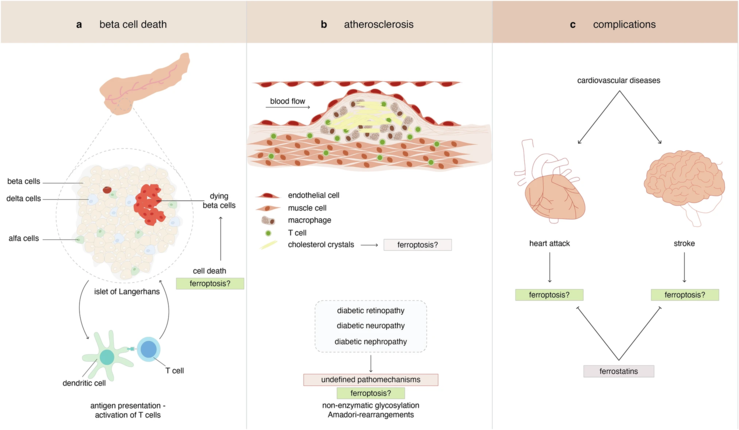Sie befinden sich hier
Inhalt
Diabetes Mellitus (DM) is a metabolic disorder caused by insulin deficiency or insulin resistance with consequent persistent hyperglycemia. This dysregulation drives multi-organ complications, with diabetic nephropathy being a major cause of morbidity and mortality. While hyperglycemia is known to contribute to renal damage, the underlying mechanisms remain unclear. Recent evidence implicates ferroptosis—a regulated, iron-dependent necrotic cell death pathway—in the progression of diabetic kidney disease (DKD). Ferroptosis is distinct in its ability to propagate death across functional units via synchronized regulated necrosis (SRN).
Our research aims to dissect how hyperglycemia and diabetic tissue conditions sensitize renal cells to ferroptosis and how we can limit the damage by adding cell death inhibitors. These studies will help define mechanisms contributing to ferroptosis in diabetic kidneys and may identify therapeutic targets to reduce tissue damage in patients at risk of SRN and dialysis.
Figure 2: a. Insulin-producing pancreatic beta cells are highly sensitive to ferroptosis, and their loss is considered the origin of type 1 diabetes mellitus (T1DM), a classic example of a metabolic disease. Diabetes mellitus, not restricted to T1DM, is frequently associated with cardiovascular complications many of which originate from progressive atherosclerotic plaque formation. b. Cholesterol crystals and cells of both the innate and the adaptive immune systems are involved in atherosclerotic plaque formation, and ferroptosis may be amongst the many pathways that contribute to necrotic debris formation in these plaques. c. Upon atherosclerotic plaque rupture, commonly observed in patients suffering from metabolic syndrome which includes diabetes mellitus, myocardial infarction, stroke and other disorders associated with a perfusion-deficit or ischemia-reperfusion injury may occur. The necrosis observed in such tissues, particularly its cell death propagation, is known to be driven by ferroptosis. Treatment with various classes of ferrostatins was demonstrated to protect end organ damage in respective experimental models. (https://www.nature.com/articles/s41418-024-01350-1)
Relevant publications


